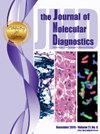仿生数字双胞胎和多组学:类风湿关节炎的应用和未知临床意义变异的潜在重新分类。
IF 3.4
3区 医学
Q1 PATHOLOGY
引用次数: 0
摘要
美国国家科学院于 12.15.23 发布了一份题为 "数字孪生的基础研究差距和未来方向 "的报告。报告阐述了在研究中使用仿生数字孪生和多组学的重要性。我们在分析类风湿性关节炎(RA)患者时采用了这些方法。我们进行了外显子组测序、基因型-表型排序和仿生数字双胞胎分析。我们在分析的患者样本中发现了 5 个致病基因变异和 1 个可能致病的 DNA 变异,但对照组中却没有发现。在这些基因(P2RX7、HTRA2、PTPN22、FLG、CD46 和 EIF4G1)中发现的变异在 RA 的发病中起作用。我们还在患者样本中发现了 3172 个临床意义不明的变异(VUS),而对照组中则没有。所有 VUS 似乎都与 RA 有关。我们从 6 个基因中发现了隐藏或暗藏的数据。在患者样本中经常发现的基因包括 HIF1A、HLA-DOA、PTGER3、HIPK3、TGFBR3 和 HIF1A-AS3。在 HIF1A、HLA-DOA、PTGER3 和 HIPK3 基因中发现的 VUS 与 RA 的发病机制直接相关,而在 TGFBR3 和 HIF1A-AS3 基因中发现的 VUS 则与 RA 的发病机制间接相关。我们的研究结果表明,通过使用仿生数字双胞胎和多组学,我们可以更深入地了解 RA 的发病过程。我们还有可能开始对VUS进行重新分类。VUS的重新分类将在复杂的分子诊断和药物开发中发挥关键作用。本文章由计算机程序翻译,如有差异,请以英文原文为准。
Biomimetic Digital Twins and Multiomics
The National Academies of Sciences, Engineering, and Medicine issued a report on December 15, 2023, “Foundational Research Gaps and Future Directions for Digital Twins.” This described the importance of using biomimetic digital twins and multiomics in research. These were incorporated in the current analysis of patients with rheumatoid arthritis (RA). Exome sequencing, genotype-phenotype ranking, and biomimetic digital twin analysis were used to identify five pathogenic and one likely pathogenic DNA variants in patient samples analyzed, which were absent from controls. The variants identified in these genes, P2RX7, HTRA2, PTPN22, FLG, CD46, and EIF4G1, play a role in the development of RA. Additionally, 3172 variants of unknown clinical significance (VUSs) were identified in patient samples, which were absent from controls. All VUSs appeared to be associated with RA. Hidden or dark data were identified from six genes. These genes, often found in patient samples, included HIF1A, HLA-DOA, PTGER3, HIPK3, TGFBR3, and HIF1A-AS3. VUSs identified in genes HIF1A, HLA-DOA, PTGER3, and HIPK3 were directly related to the pathogenesis of RA, whereas VUSs identified in genes TGFBR3 and HIF1A-AS3 were indirectly related. The current results suggest that biomimetic digital twins and multiomics can provide further insight into the development of RA. This may also potentially help with the process of reclassifying VUSs. The reclassification of VUSs will play a critical role in complex molecular diagnostics and drug development.
求助全文
通过发布文献求助,成功后即可免费获取论文全文。
去求助
来源期刊
CiteScore
8.10
自引率
2.40%
发文量
143
审稿时长
43 days
期刊介绍:
The Journal of Molecular Diagnostics, the official publication of the Association for Molecular Pathology (AMP), co-owned by the American Society for Investigative Pathology (ASIP), seeks to publish high quality original papers on scientific advances in the translation and validation of molecular discoveries in medicine into the clinical diagnostic setting, and the description and application of technological advances in the field of molecular diagnostic medicine. The editors welcome for review articles that contain: novel discoveries or clinicopathologic correlations including studies in oncology, infectious diseases, inherited diseases, predisposition to disease, clinical informatics, or the description of polymorphisms linked to disease states or normal variations; the application of diagnostic methodologies in clinical trials; or the development of new or improved molecular methods which may be applied to diagnosis or monitoring of disease or disease predisposition.

 求助内容:
求助内容: 应助结果提醒方式:
应助结果提醒方式:


